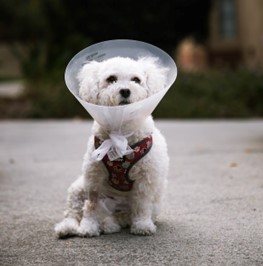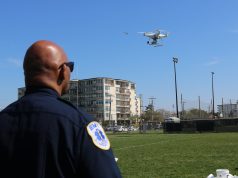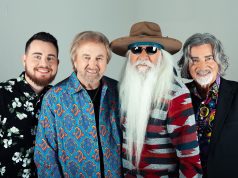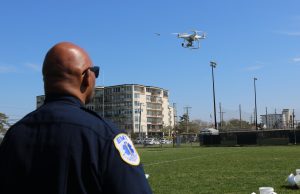Dennis Johnson of Decatur, IL has been in practice since 1966. Currently a working veterinarian at The Decatur Animal Clinic, Dennis Johnson discusses the recent advancements in surgical technology in veterinary medicine, how this technology is helping vets provide faster, more efficient surgery techniques, and helping pets recover faster from necessary surgeries.
Stem cell therapy has been a promising innovation in veterinary medicine for a decade, but new technology is taking its potential to the next level of care.
Dennis Johnson of Decatur says that a research team from Chulalongkorn University’s Faculty of Veterinary Medicine in Thailand has developed the first-ever successful stem cell transplant technology in Thailand used to treat diabetes in pets.
The new surgical approach centers on a new way to culture canine pancreatic cells from stem cells and then transplant the cells with new technology developed in partnership with Bio ink Co., Ltd.
The most common treatment for diabetes in humans, insulin injections, is not as effective in cats and dogs with the condition explains Dennis Johnson, veterinarian.
The approach creates insulin-producing cells that come from mesenchymal stem cells in dogs to replace destroyed or damaged cells. The team says it expects the surgical transplantation technique may be used to start treating animals within just three years.
Flexible and Rigid Endoscopies
Endoscopies are vital to exploring the airways of animals, as well as their urinary and gastrointestinal tracts.
Such minimally invasive but potentially life-saving interventions are relatively new to veterinary medicine, but it’s one of the most important technical advances in recent memory.
Dennis Johnson, veterinarian explains that flexible endoscopes can do everything from removing inhaled objects to diagnosing certain conditions, which both previously required surgical interventions.
Additionally, rigid endoscopes let vets access animals’ thoracic and abdominal cavities, along with other non-tubular regions — and it now requires just a few small incisions versus a large incision used in traditional surgical approaches.
Sharper Digital Imaging
Advanced digital imaging has been highly beneficial for veterinary medicine, especially in the field of orthopedic surgery.
For surgeons, Dennis Johnson, veterinarian says that razor-sharp and crystal-clear images that show bone fractures and conditions such as degenerative joint disease has led to more targeted surgical interventions and a better understanding of a pet’s diagnosis for owners.
Laser Surgery
Dennis Johnson of Decatur reports that through laser surgery, veterinary surgeons have the option to forgo traditional steel scalpels for an approach that lowers the amount of pain and bleeding, improves the healing time of tissue, and decreases inflammation, especially in dogs.
Laser surgery utilizes a device that creates a beam of light energy. In veterinary surgery, the CO2 laser is the most commonly used and is absorbed by the skin, vaporizing cells and cutting tissues.
Dennis Johnson of Decatur explains that the surgeon controls the impact of the laser beam and how much of it is absorbed by the skin. That means far more surgical precision than what can be achieved through traditional surgical tools.
Among the other benefits are a lowered risk of infection and shorter surgical times.
Anesthesia Methods
Anesthesia is nothing new in human and animal surgeries, but in recent years safer agents have helped to make new surgical treatments possible. Dennis Johnson, veterinarian says that there is still no perfect method of anesthesia.
The newest agents, including alfaxalone, isoluorane, and sevoluorane, are among the safest ever for animals. They are quick, have a minimal negative impact on internal organs, and lead to faster recovery.
Dennis Johnson, veterinarian at The Decatur Animal Clinic, explains that anesthesia monitoring has also advanced within veterinary surgery, including more technologically advanced pulse oximetry machines that can also measure heart rate, body temperature, and respiratory rate.
 3D Printing
3D Printing
Veterinary colleges in the United States are leaders in using new 3D printing techniques in surgery. 3D-printed surgical models allow surgeons to go where they haven’t quite been able to before: examining and holding bones and skulls in their hands to perform pre-surgical assessments and design perfectly matched organ implants.
Dennis Johnson of Decatur says that the technology has endless potential within veterinary surgery. Veterinary faculty at the University of Pennsylvania are using 3D Prints to make models that replicate deformities and injuries seen in animals.
The models help students practice surgical procedures and even develop new surgical approaches that may avoid contact with essential tissues and blood vessels.
3D-printed masks developed for dogs at UC Davis are helping canines heal after surgery and recover faster from bone and joint damage. Such masks align perfectly with the canine face to support bone structure and foster healing.
And at the NC State College of Veterinary Medicine, two 3D-printed prosthetic limbs made from titanium were fitted to Jack, a rescued Labrador who lost his paws as a puppy.
Without a 3D printer, veterinary surgeons would not have been able to attach small beads to the metal that let the dog’s bone attach to the prosthetic.






